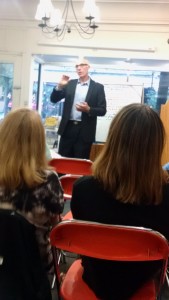
Tag Archives: hardship
Counseling the chronically and terminally ill for 15 years taught me lessons of the mind, the heart, the body and the soul. So in 2005, Journey Beyond Diagnosis was published with the hope of capturing the wisdom of those facing life-threatening disease.
By 2010, that book was virtually sold out. But people were still being diagnosed. And the familiar, internal nudge to write woke back up: the nudge to bring forward all the new knowledge from these brave, honest, scared, strong, desperate, daring and powerful people. Consequently, a second edition of Journey Beyond Diagnosis started taking shape.
Then life intervened. Tragedy struck in my own life, and it was hard. Writing became labored, and eventually ground to a stop. Making my way through tough times took what energy I had. Writing about tragedy while enduring it was not doable for me.
Once in a while, my hands could make words on the laptop. And then they couldn’t. This pecking at the second edition continued. With time, life started to feel a little better. People I trusted read bits and pieces of this edition, and in different ways encouraged me to not only keep writing, but to broaden the reach of the new material.
By now it had been 25 years counseling the chronically and terminally ill and 35 years as a psychotherapist for people suffering all matter of injury: infidelity, financial downfall, physical and sexual abuse, prejudice, death of a loved one, addiction, anxiety, depression, miscarriage, and just feeling empty for some clear reason, or no reason at all.
Given my recent reference for tragedy, earlier feedback that Journey Beyond Diagnosis was helpful even to those who had not experienced a diagnosis, and the mounting support to create a book that might benefit anyone dealing with life’s difficulties, the focus of the second edition shifted and became Journey Beyond Hardship.
Writing became more fluid and productive. An early draft of Journey Beyond Hardship was completed in the fall of 2014.
One of the first to see the new material was New York Times bestseller, Anita Moorjani. I took a chance and sent a galley proof of the book, inviting Anita to write the foreword. Tears streamed down my face weeks later at the news that she had accepted my invitation. My heart leapt again, when, through utter serendipity, New York Times bestseller, Larry Dossey, MD, sent me an endorsement. Any author would feel tremendously fortunate to have either of these magnificent human beings affiliated with one’s work. But to have both involved was overwhelming.
With Anita Moorjani’s and Dr. Dossey’s contributions now set for the book’s cover, Journey Beyond Hardship was made public in April of 2015.
Many say that writing and sharing yourself publically is daunting. There have been moments. Mostly, it’s been about honoring the stirring to bring to others what has been and continues to be given to me. Daily, my work steeps me in some of the richest elements of the human experience. There would be no rest if that potent knowledge did not get passed on.
So it’s with profound satisfaction and hope that Journey Beyond Hardship is now shared, along with these related comments from recent book signings:
“The presentation was so informative and clearly presented, I look forward to reading Greg’s book.” Christine Bubbeo
“Inspiring! Unique experience to hear the words of my heart interpreted and translated for me to understand in a new way.” Emily Thomas
“Excellent. I can’t wait to read it.” Julie Harig
“Illuminating book – a bright light for the dark road of hardship. Love the practical suggestions.” Rhonda Leifheit
“Hope is like a path on the hillside. Once there was no path, but as villagers traveled that place, a way appeared.” Those beautiful words by Lin Yutang were written well before our current understanding of neuropaths and neuroreceptors. And yet they perfectly describe what happens in the brain and on the surface of the cells, as we open ourselves more and more to hope, or any emotion. Here’s how it works.
In the hit movie, Trainwreck, Amy Schumer’s character, also named Amy, shows us in the first half of the show how our childhood wounds can express themselves in our adult lives. Given the monogamy-is-unrealistic motto firmly planted in Amy’s young mind by her dad, she lives out that approach in adulthood, hooking up with lots of men and drinking to quiet any pain.
Death of a loved one is hardship. In the hit movie, Trainwreck, Amy Schumer’s character, also named Amy, struggles to connect deeply with others, grieves her father’s death, and begins a healing journey. Let’s take a look at all three aspects of the film, and life.
Endorsed by two New York Times bestselling authors.”

